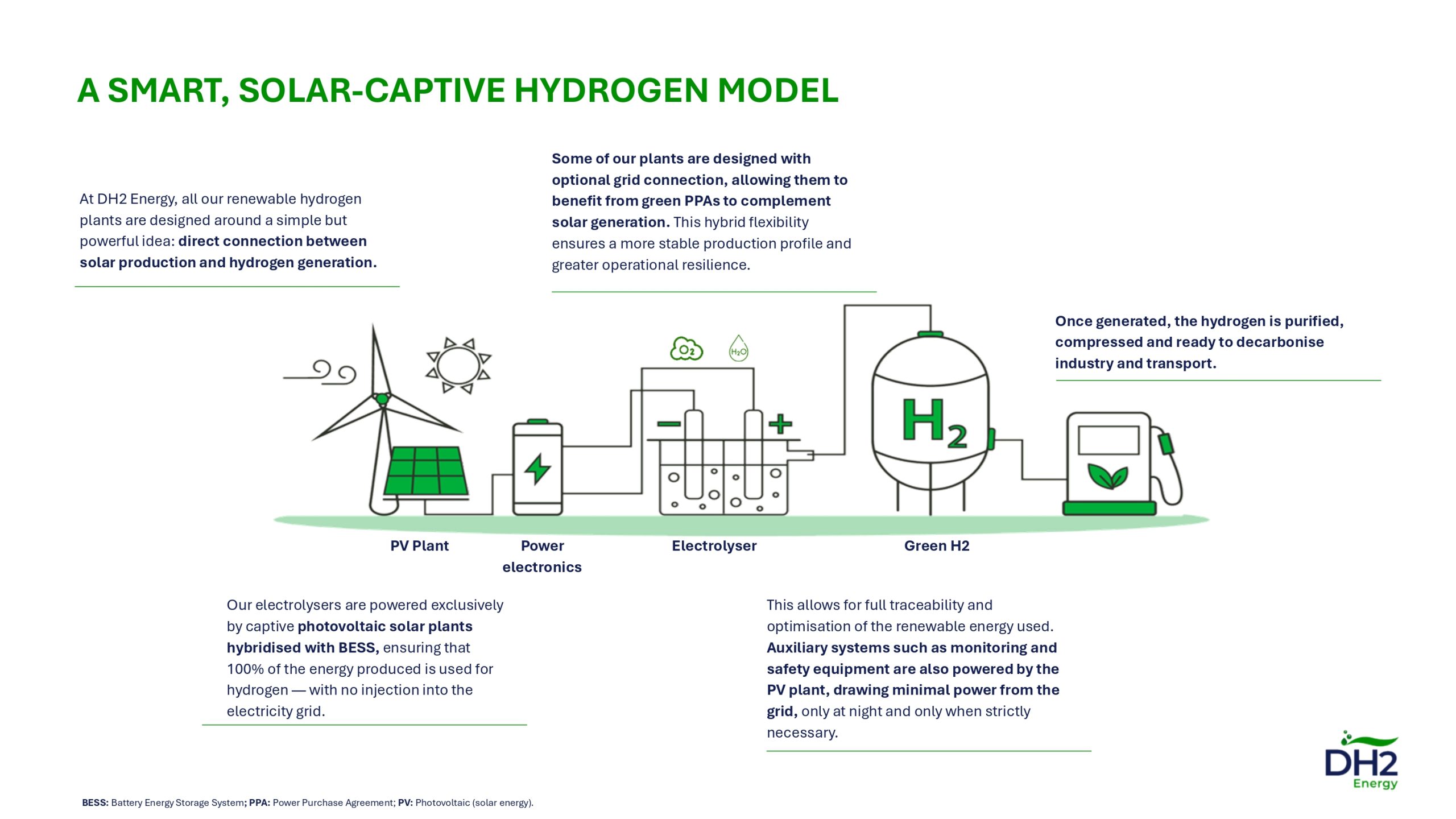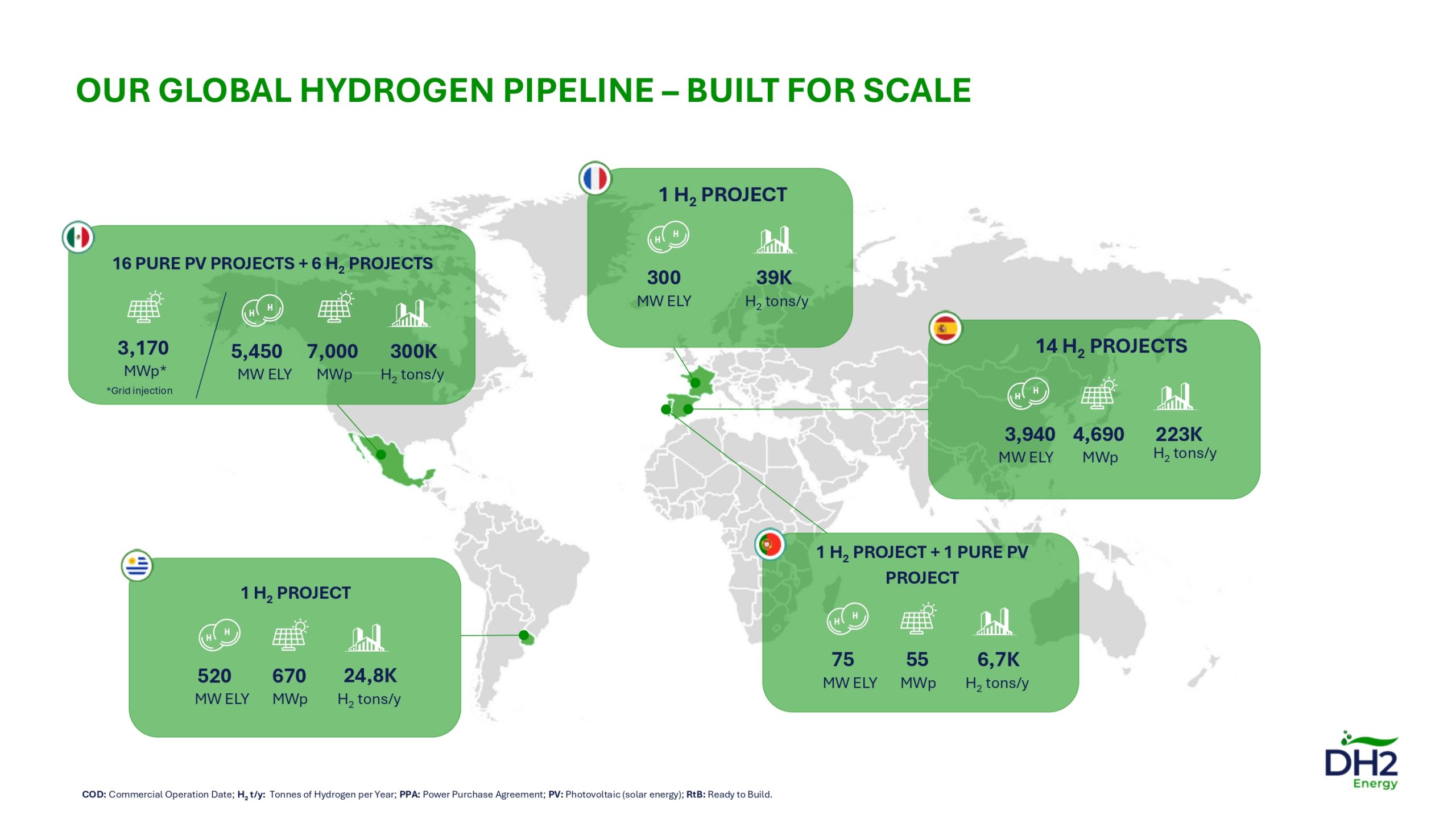The green hydrogen project was one of the winners of the European Hydrogen Bank’s first auction and, although others have withdrawn, its technical features allow it to continue.
DH2 Energy is consolidating its European expansion strategy with Hysencia, its first major industrial project in Spain, which combines photovoltaic solar energy, battery storage, and an electrolysis plant with a capacity of 35 MW.
The plant will produce up to 2,200 tonnes per year of RFNBO renewable hydrogen, aiming to supply primarily the mobility sector and heavy industry from 2028 onwards.
The project was one of six selected in the first European Hydrogen Bank auction, securing support of 8 million euros.
However, this support is not sufficient, warns Marcos López-Brea, Managing Director of DH2 Energy: “We need more help or some lever to balance the price we can achieve for hydrogen now with what potential consumers are willing to pay.”
The project estimates that the plant will produce hydrogen at a price of €5.5/kg, a figure that reflects efforts to optimise costs despite regulatory and market uncertainties.
It is worth noting that this price is very close to the most competitive level currently achievable in green hydrogen production, according to industry experts.
“There are consumers willing to pay between 3 and 6 euros, depending on whether it is for industrial use or mobility,” says López-Brea, who identifies the mobility sector as the most willing to pay higher prices.
In an interview with Strategic Energy Europe, notes that the company is working on two fronts to reduce this gap: “We are negotiating with suppliers to lower investment costs and, on the other hand, seeking agreements with buyers who can pay a bit more as regulations such as REDIII are implemented.”
Once this regulation is transposed into Spanish law, minimum quotas for the use of renewable fuels in heavy transport, aviation, and industry will be established. This creates a regulated demand that can improve consumers’ willingness to pay higher prices for green hydrogen.
Despite the interest, the lack of infrastructure such as hydrogen refuelling stations or vehicle fleets limits large-scale purchase commitments. “We believe that by 2028 the market will be more developed. Some companies have already received support to build hydrogen stations,” the executive points out.
What is behind their strategy?
The project’s technological model is central to its competitiveness. Hysencia is based on a 100% solar-captive scheme, with no grid injection, allowing full traceability and exclusive use of renewable energy.

“Our plant is designed to operate primarily with the energy generated by its own photovoltaic plant,” highlights the project leader, who notes that this model reduces costs compared to grid-connected schemes.
In addition to the photovoltaic system, the plant will include Battery Energy Storage Systems (BESS) to stabilise hydrogen production. The infrastructure has already obtained the Environmental Impact Declaration for the 49 MWp solar plant, with construction expected to begin in Q4 2025 and operations to commence in Q1 2028.
Company goals in Iberia
As part of its commercial strategies, DH2 Energy launched a tender with Mibgas in 2024, which enabled them to identify new buyers, especially in the mobility sector.
“It was our initiative, which took two years to set up, but it has generated a lot of interest and we are now in bilateral negotiations with potential buyers,” he explains.
Looking ahead, the company plans to scale its model. Its global pipeline exceeds 10 GW of electrolysis capacity, with plans to produce 600,000 tonnes of renewable hydrogen annually by 2030.

In Europe, efforts are focused on Spain and Portugal as production hubs. In France, meanwhile, they have partners and potential buyers, but are not developing projects there.




